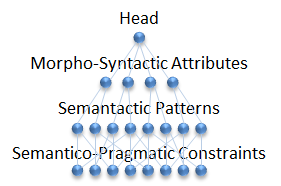Category Archives: Cognitive Science
26 May AI Domains and Approaches

Grouping, Classifying and Categorizing How do you solve big technical problems? Rather than selecting or inventing an approach and then attempting to apply it to a problem to see how well it works, let’s analyze the problem and see if we can find or invent a solution that matches the problem space, and see if […]
21 May Modeling After a Fashion

Perennial Image Problems Artificial Intelligence has an image problem. Yes, there are cybernetic characters like R2D2, C3P0 and Commander Data whom we love, but some products built using AI techniques have the dubious reputation of being useful but not entirely dependable. Think of songs sung about Sirius Cybernetics Teleporter products (see lyrics below). It is possible that […]
20 May Cybernetic Modeling for Smarty-Pants

Introduction Model railroads come in several scales: O, HO and N gauge enable hobbyists to model real-world objects in miniature using successively smaller standards. In N gauge it is possible to build an entire city in the basement. A good model photographed with still or motion pictures may be so realistic that viewers believe they are looking […]
19 May Deixis and Context

Deixis, is a common type of ambiguity that is mediated at the level of context. When deixis occurs in written language, you can normally resolve questions about the identity of the person(s) referenced in the ‘he’, ‘she’ or ‘they’ pronoun. In speaking, you sometimes have to ask the person who said it. 3-DG places context in […]
16 May Discourse Pragmatics

Pragmatics Context data is critical for disambiguation of words that have many possible meanings. These meanings are almost always mediated by context, therefore understanding context must precede disambiguation. For instance, when standing in a ring appears in the context of a boxing match, ring refers to a physical object with corners. The same phrase, in […]
15 May Analyzing Semantics

Semantics The stratum of semantics is usually associated with meaning. Throughout the 1980s, when I was in college, semantics was viewed as more and more important in text-understanding systems. One aspect of semantics that has received a great deal of attention is thematic or case roles, which can be very useful in defining the roles of words or […]
14 May Analyzing Syntax

Analyzing Syntax Syntactic analysis requires some access to morphological features or characteristics of the words in the sentence being analyzed. Tense, gender and number must be accessible in order to establish agreement. There is clearly some interdependency between morphology and syntax. Morphological phenomena can change categories and roles of words. Roles and categories are the essential components of […]
13 May Patterns at the Boundaries

Morphological Patterns As we have shown in prior posts, we mentally process patterns both at a physical level between neurons and in brain layers, and at a cognitive level in recognition and reasoning. 3-DG uses attributes, patterns and constraints for morphological analysis, as well as analysis at other levels and between other strata. The 3-DG lexicon is organized […]
10 May Word Structure Analysis

Analyzing Morphology In many natural languages, gender or case has a profound affect on morphology – so much so that students have to memorize conjugation tables. It’s really easy to teach computers about conjugation tables and they remember very well. If it were not so, it may be difficult to keep their attention long enough […]





